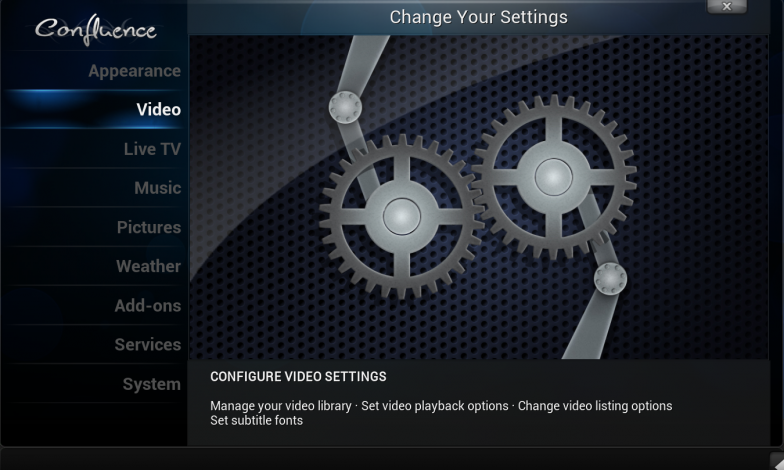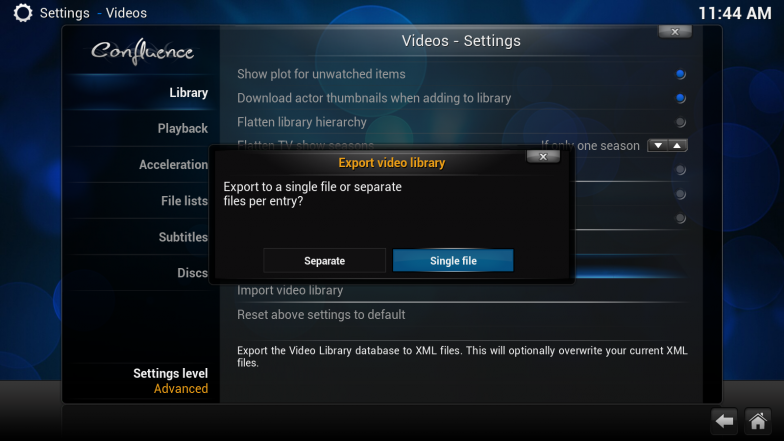Moving from Raspbmc
Hi
Many users are finally starting to move over from Raspbmc to OSMC, so we thought we’d write a small guide to help you get moved over with as little interruption as possible and ensure that you get the very best out of OSMC.
What’s OSMC? Why is it better?
You can learn more about OSMC here, but in short, this is why OSMC is a great upgrade from Raspbmc:
- *Improved update system *— we’ve made our update system much more reliable as well as make it possible to properly schedule and configure update behaviour.
- A faster experience: we’ve built OSMC right from the ground up to ensure it’s faster and more stable than Raspbmc ever was.
- An App Store: our applications store lets you install new features and packages right from your remote. This makes your OSMC system expansive, but it means we don’t ship features people might not need. This ensures OSMC doesn’t get bloated but still gets to expand its featureset.
- It’s cross platform: many of you have been asking for the Raspbmc experience on other devices. OSMC already runs on a variety of different devices and by the end of the year it will run on even more.
Most importantly, we’re still supporting *all *models of Raspberry Pi, so getting up and running again is quick and simple.
Backing up Raspbmc
We recommend you mainly start fresh with OSMC, as quite a lot has changed between the two distributions. However you should be good to back up and import your library if you have one set up. This assumes you’re using Confluence on Raspbmc and the OSMC skin on OSMC.
First, on Raspbmc, head in to the Settings menu by selecting System -> Settings

Now, select Video

Next, ensure that your settings mode is set to ‘Advanced’ or higher. This is necessary to expose the option that lets us export the library. This is visible in the bottom left corner and looks as follows:

After this, select Library and you will now be able to select Export video library. You’ll receive the following prompt:

Select Single file and choose Home folder as the destination directory.
Repeat the above steps for Music if you wish to export a Music library as well.
Now, you can transfer this file back to your computer via FTP or Samba or even by attaching a USB drive.
If you are streaming content from a variety of sources, we also recommend you backup ‘sources.xml’. This is available under /home/pi/.kodi/userdata/sources.xml and should be placed in /home/osmc/.kodi/userdata/sources.xml after the first boot of OSMC.
Installing OSMC
OSMC is simple and easy to install, just like Raspbmc was. Head over to the Download page here and select the operating system that you’re running on your PC currently. This will let you install OSMC to your SD card and set up any custom network or installation settings.
To restore your database which you exported, transfer it over to the home folder with a flash drive or via FTP / SMB (see below). You will notice on OSMC the home directory is now /home/osmc.

Now, head in to Settings -> Videos. Again, ensure that your Settings level is set high enough (Advanced or above). Select the Library submenu and you will now see the _Import video library _option. Select this and browse to the file you transferred to your home folder.
Repeat the instructions for Music libraries as well.
Things look different!
With OSMC, we decided to ship a different skin that really showcased OSMC right out of the box. However you can still use any compatible Kodi skins as you could with Raspbmc. If you’d like to get the classic look and feel of Raspbmc back, simply:
- Navigate to Settings -> Appearance -> Skin
- Select ‘Confluence’
Where’s the FTP server? Where’s the Samba server?
The built-in FTP and Samba server were used by a lot of users, but not all. As such, we decided to ship them as apps in our applications store rather than enable them by default on every system. To get them head in to My OSMC -> App Store. The default username and password is osmc for both applications.
Can I stay with Raspbmc?
You can still grab ‘classic’ Raspbmc at any time from the Downloads page, however we won’t be updating it anymore and can only provide a limited amount of support for it.
New forum
We’ve moved to new forum software to better cope with the ever growing number of users. You’re bound to have questions, so please feel more than obliged to join our bustling community here.
Try it
We think you’ll really enjoy OSMC, but don’t just take our word for it. We’re always working hard to take your feedback on board and make it even better, so do let us know what you think.
Comments